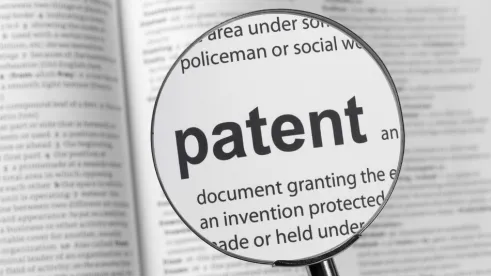A method of producing a desired population of multi-cryopreserved hepatocytes was held to be patent-eligible because the challenged claims did not recite a judicial exception. Rapid Litig. v. CellzDirect, Inc.., 2015-1570 (Fed. Cir., July 5th 2016). The decision provides much needed guidance to the life science industry that had yet to receive positive guidance from the court regarding what is patent-eligible under the U.S. Supreme Court’s two part patent-eligibility test.
U.S. Patent No. 7,604,929
Appellant Rapid Litigation Management (formerly Celsis Holdings, Inc. and In Vitro, Inc.) appealed the district court’s summary judgment determination that U.S. Patent No. 7,604,929 (the ‘929 Patent) entitled “Cellular Compositions and Methods for Their Preparation” was invalid under U.S.C. § 101 for being directed to a patent-ineligible law of nature. The ‘929 patent issued in 2009, prior to the U.S. Supreme Court’s 2012 Mayo decision. (Mayo Collaborative Servs. v. Prometheus Labs., Inc., 132 S.Ct. 1289 (2012).
The ‘929 Patent exploits the discovery that some fraction of hepatocytes is capable of surviving multiple freeze-thaw cycles. Slip Op. at 4. The ‘929 Patent claims an improved process of preserving hepatocytes that in general requires subjecting previously frozen and thawed cells to density gradient fractionation to separate viable cells from non-viable cells, covering the cells, and refreezing the separated viable cells. Id. The court noted that the claimed process has a number of advantages. For example, hepatocyte cell populations can be frozen and thawed without loss of viability and it allows the pooling of hepatocyte preparations. Id.
Claim 1 was determined to be representative of the issued ‘929 Patent claims:
A method of producing a desired preparation of multi-cryopreserved hepatocytes, said hepatocytes being capable of being frozen and thawed at least two times, and in which greater than 70% of the hepatocytes of said preparation are viable after the final thaw, said method comprising:
- (A) subjecting hepatocytes that have been frozen and thawed to density gradient fractionation to separate viable hepatocytes from non-viable hepatocytes, recovering the separated viable hepatocytes, and
- (B) cryopreserving the recovered viable hepatocytes to thereby form said desired preparation of hepatocytes without requiring a density gradient step after thawing the hepatocytes for the second time, wherein the hepatocytes are not plated between the first and second cryopreservations, and wherein greater than 70% of the hepatocytes of said preparation are viable after the final thaw.
The district court applied the U.S. Supreme Court’s two-part test and held, on summary judgment, that the ‘929 Patent recites a law of nature (the discovery that hepatocytes are capable of surviving multiple freeze thaw cycles), and that the patented process lacks the requisite inventive concept. Slip Op. at 6.
The Two-Part Test
On appeal, the Federal Circuit first focused on the Supreme Court’s current two-part test for patent-eligibility, namely: (1) first determine if the claim is directed to one of the judicial exceptions to patent-eligibility (if no, the inquiry is over and the claim is eligible), and (2) if the answer to the first question is yes, then determine whether the claim elements individually and as an ordered combination transform the judicial exception into a patent-eligible application.
A Patent-Eligible Concept
In finding the claims patent-eligible, the court noted that the claims require an artisan to carry out a number of concrete steps to achieve the desired preparation. The claims, the court stated, are directed to a new and useful laboratory technique to achieve a new and useful end. The court highlighted that the patent claims did not stop at reciting the law of nature (i.e., that some hepatocytes can be frozen and thawed and survive). Importantly, the Federal Circuit contrasted the ‘929 Patent claims with claims in other patents found to be ineligible, such as the invalidated claims in the Genetic Techs, Ariosa v. Sequenom, and In re BRCA cases. The court noted that the patent-ineligible claims in those cases focused solely on the judicial exception and did not apply the discoveries as do the ‘929 Patent claims. The court summarized the distinction noting “[b]ecause the claimed process involves both multiple freeze-thaw cycles and pooling cells from various donors, it results in a preparation that is both new and vastly more useful for research than hepatocyte preparations made by conventional methods.” Slip Op. at 10.
Although the court determined that the claims did not recite a judicial exception and therefore there was no need to proceed to the second step of the U.S. Supreme Court’s analysis, it nonetheless proceeded to analyze the claims to determine if they recited “something more” than the judicial exception itself. Noting the advantages of the process for preparing hepatocytes for later use, “the claimed method is patent eligible because it applies the discovery that hepatocytes can be twice frozen to achieve a new and useful preservation process.” Slip Op. at 14.
The court also dismissed the argument that the claims were not patent-eligible “because the claims’ individual steps (freezing, thawing, and separating) were known independently in the art does not make the claim unpatentable.” Id. The court stated that while the individual steps were known, the process of preserving hepatocytes by repeating those steps was itself “far from routine and conventional.” Slip Op. at 15.
The court also made a point of dismissing the Appellee’s argument that once it was discovered that hepatocytes could be frozen and thawed multiple times, it would have been a simple task to repeat the steps to arrive at the claimed invention. However, “patent-eligibility does not turn on ease of execution or obviousness of application. Those are questions that are examined under separate provisions of the Patent Act.” Slip Op. at 16. Separately, the court also noted that the claimed methods are not pre-emptive and do not lock up the natural law in its entirety. Id.
Constructive Guidance for Personalized Medicine and the Life Sciences
The Federal Circuit’s decision is welcome guidance on what transforms a claim reciting a judicial exception into a patent-eligible claim. The court’s opinion not only addresses and provides guidance on why a claim that recites an exception is patent-eligible (step 1 of the two-part test), it also evaluates the claims under the second part of the test and articulates why the claims recite more than the judicial exception. Moreover, the court validated that claims reciting a judicial exception can still be patent-eligible, even where the additional claim elements were known in the art.
In this opinion, the court repeatedly emphasized that while the claims recited a natural law (some hepatocytes can be repeatedly frozen and thawed), the additional claim elements provided something that was new and useful. Thus, in the context of personalized medicine, process and diagnostic claims that provide a new and useful product, such as a new treatment regime or diagnostic evaluation, may present patent-eligible subject matter provided the claim is more than recitation of the judicial exception.




 />i
/>i

